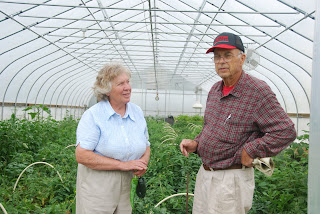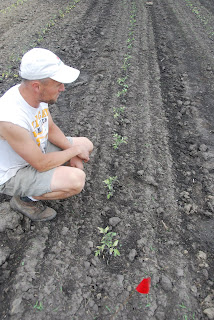BLTs
Three weeks ago when I brought tomatoes home, my husband’s expression went from confused to ecstatic. They were farm fresh, grown by Dean and Judy Henry of the Berry Patch, and it was May! Our family enjoyed our first BLTs of the year, brimming with those juicy tomatoes, Audubon Family Farm’s mouth-watering bacon, and Prairie Sky Homestead’s fresh lettuce. If you have trouble getting your little ones to each vegetables, serve them something they will appreciate. Maya, my almost five-year-old, gets a

The Berry Patch doesn’t have the only tomatoes on the farm that are exciting me this week. I visited Andy and Melissa Dunham’s Grinnell Heritage Farm yesterday to talk with Andy about his favorite tractor implement for cultivation (the thing was so cool I want to buy one, and I don’t even have a farm to weed). For more on this implement, you will have to wait for the summer PFI newsletter; the suspense builds.
While at the farm, I was able to observe Andy’s grafted tomatoes that are part of a PFI research project. The project involves grafting heirloom tomatoes, Cherokee pur
The plants are still young, but they are alive, having survived the grafting phase and being transplanted to the field. Andy said that grafting the tomatoes was “one of the weirdest things I have ever done. It was like performing tomato surgery.” The graft unions are evident, and have healed quite neatly. Apparently Andy is a good surgeon.

